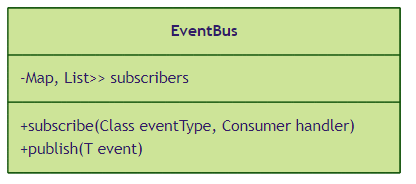Java高阶函数深度解析:组合与柯里化实践
Java高阶函数实践:从组合到回调的深度解析
1. 函数组合的艺术
函数组合是函数式编程的核心概念之一,它允许我们将多个简单函数组合成更复杂的操作链。
andThen与compose对比
Java提供了两个主要的组合方法:
Function<Integer, Integer> doubleFn = x -> x * 2;
Function<Integer, Integer> squareFn = x -> x * x;
// compose: 先执行参数中的函数,再执行调用者
Function<Integer, Integer> composed = doubleFn.compose(squareFn); // (x^2)*2
// andThen: 先执行调用者,再执行参数中的函数
Function<Integer, Integer> chained = doubleFn.andThen(squareFn); // (x*2)^2
System.out.println(composed.apply(3)); // 输出18
System.out.println(chained.apply(3)); // 输出36实践建议:
- 对于线性数据处理管道,优先使用
andThen保持从左到右的可读性 - 当需要从内到外构建函数时(如数学函数的嵌套),使用
compose - 组合超过3个函数时考虑使用静态导入的辅助方法提高可读性
多函数组合模式
@SafeVarargs
public static <T> Function<T, T> combine(Function<T, T>... functions) {
return Arrays.stream(functions)
.reduce(Function.identity(), Function::andThen);
}
Function<Integer, Integer> complexFn = combine(
x -> x + 1,
x -> x * 3,
x -> x - 2
);
System.out.println(complexFn.apply(5)); // 输出162. 柯里化实现技巧
柯里化(Currying)是将多参数函数转换为一系列单参数函数的技术。
基本柯里化实现
// 原始函数
BiFunction<Integer, Integer, Integer> add = (a, b) -> a + b;
// 柯里化版本
Function<Integer, Function<Integer, Integer>> curriedAdd = a -> b -> a + b;
// 使用方式
Function<Integer, Integer> add5 = curriedAdd.apply(5);
System.out.println(add5.apply(3)); // 输出8通用柯里化工具
public static <T, U, R> Function<T, Function<U, R>> curry(BiFunction<T, U, R> biFunc) {
return t -> u -> biFunc.apply(t, u);
}
public static <T, U, V, R> Function<T, Function<U, Function<V, R>>> curry(TriFunction<T, U, V, R> triFunc) {
return t -> u -> v -> triFunc.apply(t, u, v);
}
@FunctionalInterface
public interface TriFunction<T, U, V, R> {
R apply(T t, U u, V v);
}
// 使用示例
TriFunction<Integer, Integer, Integer, Integer> sum3 = (a, b, c) -> a + b + c;
Function<Integer, Function<Integer, Function<Integer, Integer>>> curriedSum = curry(sum3);
System.out.println(curriedSum.apply(1).apply(2).apply(3)); // 输出6实践建议:
- 在需要部分应用参数的场景使用柯里化
- 对于超过3个参数的函数,考虑使用元组而不是深度柯里化
- 在Stream操作中,柯里化可以方便地创建专用函数
3. 闭包作为返回值的设计模式
闭包作为返回值可以实现强大的工厂模式和策略模式变体。
配置工厂模式
public static Function<String, Consumer<String>> createLogger(boolean withTimestamp) {
return prefix -> message -> {
String log = withTimestamp
? String.format("[%s][%s] %s", LocalDateTime.now(), prefix, message)
: String.format("[%s] %s", prefix, message);
System.out.println(log);
};
}
// 使用
Function<String, Consumer<String>> loggerFactory = createLogger(true);
Consumer<String> errorLogger = loggerFactory.apply("ERROR");
errorLogger.accept("Disk full"); // 输出带时间戳的错误日志状态保持闭包
public static Supplier<Integer> createCounter(int start) {
AtomicInteger count = new AtomicInteger(start); // 被捕获的变量
return () -> count.incrementAndGet();
}
Supplier<Integer> counter = createCounter(10);
System.out.println(counter.get()); // 11
System.out.println(counter.get()); // 12实践建议:
- 使用不可变对象或线程安全对象作为捕获变量
- 避免返回修改外部状态的闭包,除非这是明确需求
- 对于复杂的状态保持,考虑使用类而不是闭包
4. 回调函数与事件处理
回调是异步编程的基础,Java中常用函数式接口实现。
基本回调模式
public static void fetchData(Consumer<String> callback) {
new Thread(() -> {
try {
Thread.sleep(1000); // 模拟IO延迟
callback.accept("Data loaded");
} catch (InterruptedException e) {
callback.accept("Error occurred");
}
}).start();
}
// 使用
fetchData(result -> System.out.println("Result: " + result));事件总线实现

public class EventBus {
private final Map<Class<?>, List<Consumer<?>>> subscribers = new ConcurrentHashMap<>();
public <T> void subscribe(Class<T> eventType, Consumer<T> handler) {
subscribers.computeIfAbsent(eventType, k -> new CopyOnWriteArrayList<>())
.add(handler);
}
@SuppressWarnings("unchecked")
public <T> void publish(T event) {
List<Consumer<?>> handlers = subscribers.get(event.getClass());
if (handlers != null) {
handlers.forEach(handler -> ((Consumer<T>) handler).accept(event));
}
}
}
// 使用示例
EventBus bus = new EventBus();
bus.subscribe(String.class, msg -> System.out.println("Received: " + msg));
bus.publish("Hello EventBus!");实践建议:
- 对于复杂事件系统,考虑使用现有框架(如Guava EventBus)
- 回调中处理异常,避免异常吞没
- 在GUI编程中,确保回调在正确的线程执行
性能考量与最佳实践
- 对象创建开销:频繁创建的闭包可能带来GC压力,考虑重用
- 可读性平衡:过度使用高阶函数会降低代码可读性
- 调试技巧:为重要闭包命名而不是使用匿名形式
- 文档注释:为高阶函数编写详细的参数和返回值说明
// 好的实践:命名闭包提高可读性
Function<Integer, Integer> discountCalculator = createDiscountCalculator(0.8);
Predicate<Order> largeOrderFilter = createSizeFilter(1000);
// 添加文档注释
/**
* 创建折扣计算函数
* @param ratio 折扣率 (0-1)
* @return 计算折扣后的函数
*/
public static Function<Integer, Integer> createDiscountCalculator(double ratio) {
return amount -> (int)(amount * ratio);
}通过合理运用这些高阶函数技术,可以大幅提升Java代码的表达力和模块化程度,同时保持类型安全和运行时性能。